Northampton, Northamptonshire
Up to 1834
The 1725 edition of An Account of Several Workhouses reports workhouses in operation in the Northampton parishes of All Saints and St Peter. A parliamentary report of 1776-7 listed four: All Saints (for up to 60 inmates), St Giles (15), St Peter's (6), and St Sepulchre (45).
Eden, in his 1797 survey of the poor in England, reported of Northampton that:
The 'comfortable' nature of the All Saints workhouse was confirmed following a vist by Assistant Poor Law Commissioner J.J. Richardson in 1832 who reported that:
After 1834
The Northampton Poor Law Union formally came into being on 27th August 1835. Its operation was overseen by an elected Board of Guardians, 33 in number, representing its 17 constituent parishes as listed below (figures in brackets indicate numbers of Guardians if more than one):
County of Northampton:
Abington, Bugbrooke, Dallington, Duston, Great Billing, Little Billing, Harpole, Kingsthorpe, Kislingbury, Nether Heyford, Northampton All Saints (6), Northampton St Giles (4), Northampton St Peter (2), Northampton St Sepulchre (4), Upper Heyford, Upton, Weston Favell.
Later Additions: Moulton Park (1837-62).
The population falling within the Union at the 1831 census had been 21,761 with parishes ranging in size from Upton (population 48) to Northampton All Saints (7,333). The average annual poor-rate expenditure for the period 1832-5 had been £8,458 or 7s.9d. per head of the population.
Northampton workhouse was built in 1836 at the north side of the Wellingborough Road, to the north-east of the Northampton. It could accommodate 300 inmates and it cost approximately £7,000. The building was designed by George Gilbert Scott who was the architect of many other workhouse buildings including ones for the nearby Kettering and Oundle Unions. The main workhouse building had a cruciform layout, as shown on the 1901 map below.
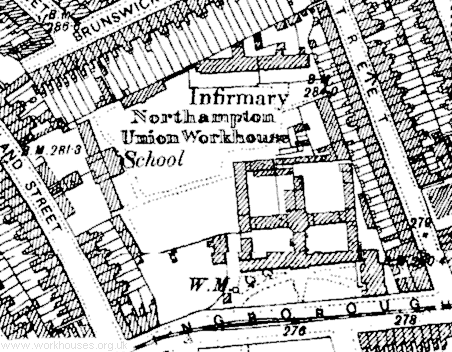
Northampton workhouse site, 1901.
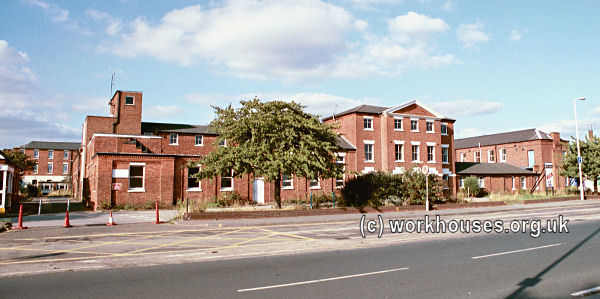
Northampton workhouse from the south-west, 2000.
© Peter Higginbotham.
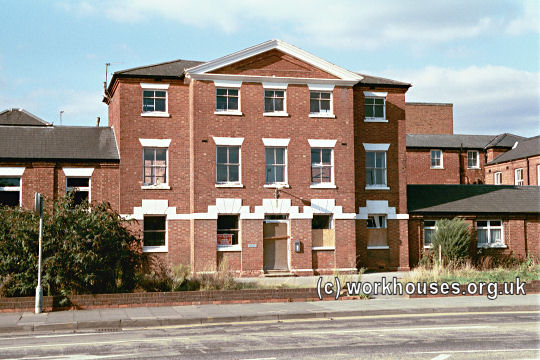
Northampton entrance block from the south-east, 2000.
© Peter Higginbotham.
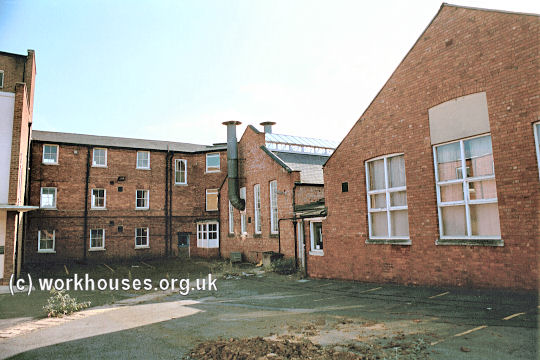
Northampton workhouse north-eastern inmates' yard, 2000.
© Peter Higginbotham.
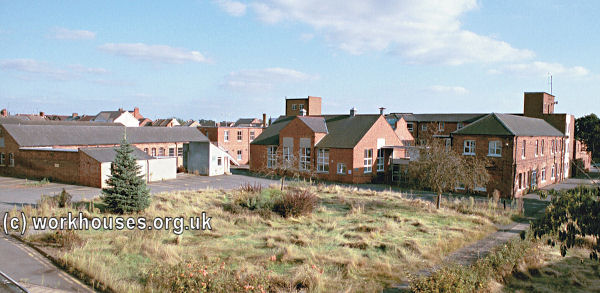
Northampton workhouse from the north, 2000.
© Peter Higginbotham.
To the north of the workhouse is an infirmary building dating from around 1870.
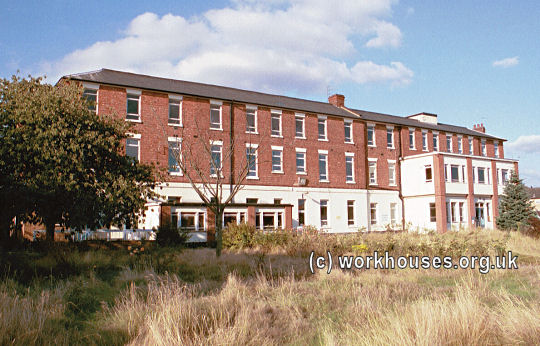
Northampton workhouse infirmary from the south, 2000.
© Peter Higginbotham.
The workhouse had its own large residential school which stood at the west of the site.
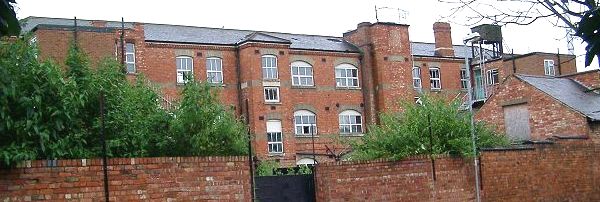
Northampton workhouse school from the west, 2003.
© Peter Higginbotham.
From 1904, children born in workhouses no longer had any indication of this on their birth certificate. Instead, the place of birth was recorded as a euphemistic street address. In the case of Northampton, the address used for this purpose was 137a Wellingborough Road. From around 1918, the practice was also extended to death certificates.
After 1930, the workhouse was taken over by the Northampton Borough Council and renamed St Edmund's Hospital which continued in operation until 1998. In October 2014, after the site had been left unoccupied for more than 15 years, plans were announced for renovating the buildings for use as elderly care home.
Children's Scattered Homes
From the early 1900s, workhouse children were placed in a number of houses around the west side of the town known as scattered homes. In each home, a group of children lived under the care of houseparents. The children helped with running of the home and attended local schools. The locations of the homes included 95 St Michael's Road, 15 Colwyn Road, 1 Adelaide Terrace, Leicester Road; 43 Semilong Road, and 21 Marriott Road, all of which still survive as residential properties.
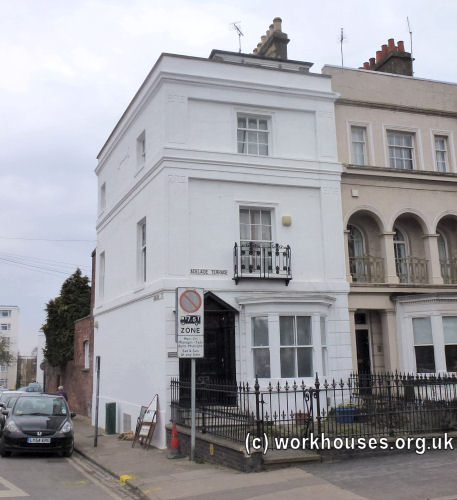
Northampton former scattered home at 1 Adelaide Terrace, 2013.
© Peter Higginbotham.
A Receiving Home for new admissions to the homes was located at 2 Watkin Terrace, Bailiff Street, Northampton.
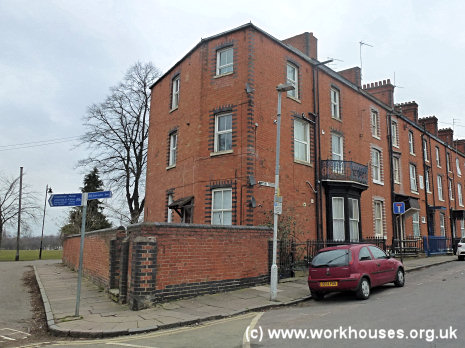
Northampton former Receiving Home at 2 Watkin Terrace, 2013.
© Peter Higginbotham.
Staff
Inmates
Records
Note: many repositories impose a closure period of up to 100 years for records identifying individuals. Before travelling a long distance, always check that the records you want to consult will be available.
- Northamptonshire Record Office, Wootton Hall Park, Northampton, Northants, NN4 8BQ. A wide variety of records survive including: Guardians' minutes (1836-9, 1863-1930); Births register (1893-1912); Deaths register (1893-1914); Admissions and discharges (1907-8, 1911-31); etc.
Bibliography
- Higginbotham, Peter The Workhouse Encyclopedia (2014, The History Press)
Links
Unless otherwise indicated, this page () is copyright Peter Higginbotham. Contents may not be reproduced without permission.


